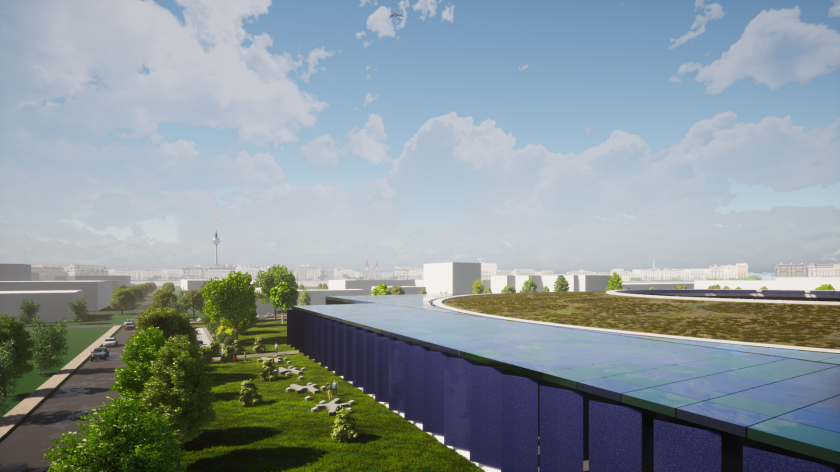The future of BESSY

This is what the successor source BESSY III could look like in the future. © Rendering: HZB
At the end of February 2024, a team at HZB published an article in Synchrotron Radiation News (SRN). They describe the next development goals for the light source as well as the BESSY II+ upgrade programme and the successor source BESSY III.
In autumn 2023, HZB celebrated 25 years of research at the BESSY II light source in Berlin-Adlershof. To continue offering scientists from all over the world the best research opportunities in the coming decades, it is important to have a vision for BESSY II. In addition, many light sources around the world are currently being modernised or even newly built to keep up with the latest research questions and contribute with state-of-the art research infrastructures.
The article "Material Discovery at BESSY" shows the relevance of BESSY light source for the research questions of the future. The HZB team describes the goals of the BESSY II+ upgrade programme. Among other things, the programme aims to expand operando techniques that are of great benefit in developing materials for the energy transition.
BESSY II+ is a bridge between BESSY II and the successor source BESSY III, which is scheduled to go into operation in the mid-2030s. It is set to become the "materials discovery machine": a combination of the extremely bright, soft 4th generation light source, the integrated research campus in Berlin-Adlershof and the quantitative measurement capabilities of the national metrology institute (PTB, Physikalisch-Technische Bundesanstalt) from synchrotron research.
The article has been published in open access and can be read in the journal SRN, which specialises in synchrotron research.
DOI: https://doi.org/10.1080/08940886.2024.2312051
https://www.helmholtz-berlin.de/pubbin/news_seite?nid=26346;sprache=en
- Copy link
-
The twisted nanotubes that tell a story
In collaboration with scientists in Germany, EPFL researchers have demonstrated that the spiral geometry of tiny, twisted magnetic tubes can be leveraged to transmit data based on quasiparticles called magnons, rather than electrons.
-
Ernst Eckhard Koch Prize and Innovation Award on Synchrotron Radiation 2025
At the 27th BESSY@HZB User Meeting, the Friends of HZB honoured the dissertation of Dr Enggar Pramanto Wibowo (Friedrich-Alexander University Erlangen-Nuremberg). The Innovation Award on Synchrotron Radiation 2025 went to Prof. Tim Salditt (Georg-August-University Göttingen) and Professors Danny D. Jonigk and Maximilian Ackermann (both, University Hospital of RWTH Aachen University).
-
Bright prospects for tin perovskite solar cells
Perovskite solar cells are widely regarded as the next generation photovoltaic technology. However, they are not yet stable enough in the long term for widespread commercial use. One reason for this is migrating ions, which cause degradation of the semiconducting material over time. A team from HZB and the University of Potsdam has now investigated the ion density in four different, widely used perovskite compounds and discovered significant differences. Tin perovskite semiconductors produced with an alternative solvent had a particular low ion density — only one tenth that of lead perovskite semiconductors. This suggests that tin-based perovskites could be used to make solar cells that are not only really environmentally friendly but also very stable.
